Now is the time of year you will receive your annual super statement. There are three ways you might respond:
Ignore it.
Use the opportunity to conduct a regular checkup to see how you are going … or
Go further and use this as a trigger to finetune your investments and increase your income …
Which action will you take?
Because superannuation contributions have been mandatory since 1992, most Australians now have enough money in super to care how it is being managed and how quickly it is growing. Mandatory super also means mandatory reporting, hence the requirement for all super funds to advise members on the performance of money in their account during the previous financial year.
Different funds will send statements which vary in the amount of detail shared and how the statements are set out. Don’t let statements which are pages long put you off. Now is your chance to get into the driver’s seat and take control of your money and its implications for a comfortable retirement. There are five main pulse points you will need to understand:
- Opening and closing balances
- Movement of your balance year-on-year
- Account summary with transactions and earnings
- How and where your money is invested
- Insurance provisions and beneficiaries
Each of these pulse points can deliver a different message, with the sum of these messages enabling you to project income changes and consider ways to increase the longevity of your savings. Here’s a brief summary of what to look for and how to use the information you glean.
1. Opening and closing balances
As obvious as it seems, research suggests that most people could not nominate their current super balance. If you are planning for an active and enjoyable retirement, it’s imperative you know how much you can spend and that you can live a reasonable lifestyle across the 20 or 30 years most of us are given. But doing the sums delivers still more insights.
2. Movement of your balance year-on-year
This number is critical. This is the net earnings over the past 12 months, after fees have been deducted (also pension payments if you are in decumulation) and credits made (you may still have employer contributions, salary sacrifice and there will be earnings on money invested). The net earnings figure is your best way of measuring your own super savings performance. It is not enough to congratulate yourself if your fund comes up as one of the top performing funds. The important question is how did your own money grow? Did it increase at least in line with the median fund return over the past 12-months, and how has it performed over the long-term? There are a few contributing factors here, most of which you will glean from Pulse Point #3
3. Account summary with transactions and earnings
This basically shows what has been added to your account and what has been deducted. Additions include contributions (employer, personal) and earnings, while deductions will include tax paid, fees (both fees on your account and fees on investments) and insurance premiums if applicable. If your super is in decumulation (usually an Account-Based Pension, often called a ‘pension account’ or ‘income stream’) your regular payments will be recorded as deductions and you will often see a note confirming the minimum annual amount you are required to withdraw. So this summary offers a clear and useful snapshot of how much money you started with, what each deduction was for and how much money still comes in. Most retirees would hope that their super fund earnings are consistent with those of high performing funds – here’s a link to SuperRatings 2024-2025 funds’ performance rankings so you can see what is considered a benchmark. If you feel your fund earnings have been sub-par, read on for Pulse Point #4
4. How and where your money is invested
It’s easy to assume that all funds return the same amount for all their members. They don’t. Members have the right (and responsibility) to choose their own investment settings. This can be done by selecting how your money is used, and where. The ‘how’ refers to the mix of asset classes, importantly the balance between ‘growth’ investments and ‘defensive’. This may sound complicated, but it’s not. The main growth assets super funds invest in include:
- Property
- Infrastructure assets
- Australian shares
- International shares
While defensive assets commonly held on behalf of fund members include:
- Cash
- Australian fixed interest
- International fixed interest
- Credit income
Earlier in adult life, when you are decades from retirement, it generally makes sense to hold a higher weighting to growth assets with a lower allocation to defensive investments. As retirement draws closer, it is sensible to strike the right balance between the two.
David Kennedy, Head of Advice at Retirement Essentials, puts it this way:
“Choosing the right investment mix can be the difference between retiring and spending with confidence or retiring with nagging concerns about your super running out. Striking the right balance between growth and defensive assets comes down to your retirement spending goals, your risk appetite and how long your money needs to last. While it can be tempting to switch to an overly conservative portfolio in retirement, it is worth remembering that in most cases, you are still investing for the long-term (often decades), and so keeping a suitable exposure to growth assets can really help your money last the distance.”
- Insurance provisions and beneficiaries
This matters more than you may think, for two reasons. Firstly, whether or not you continue to choose to have insurance cover (and what type) with your fund. After a certain age many Australians choose to deselect the insurance option. It’s a very personal choice and will depend upon your circumstances, family situation and your age. Nominating beneficiaries, in the event of your death, is a no brainer. If you do not do this (and the nomination must be valid) then the trustee of the fund will be the one who decides who will receive the funds. It’s really important to check this aspect of your statement and be reassured that the nomination is valid and matches your current wishes.
In short, rather than treat the arrival of your annual super statement as one more boring document you ‘have to’ read, why not try the ‘get to’ approach? When your statement arrives, you will ‘get to’ check five key pulse points for a comfortable retirement nest egg and adjust any that aren’t delivering optimal outcomes.
If you are unsure of any aspect of your super savings, investment choices and returns, contacting your super fund is a logical next step.
Separately, you can use your latest balance to project, alongside any Age Pension entitlements, how much you can expect to earn over the coming years. You can do this projection with an adviser in a guided Retirement Advice Consultation. If the amount calculated is insufficient for your needs or plans, you can then discuss options you have to boost your retirement income.
But checking your super balance and returns once a year is probably not enough.
Waiting 12-months to take action when every penny counts may not be the best strategy.
What do you think?
How often do you review your own super savings?
This article is provided by Retirement Essentials Representative Number: 001260855. We are an authorised representative of SuperEd Pty Ltd ABN 88 118 480 907 AFSL #468859. This information is not intended as financial product advice, legal advice or taxation advice. It does not take into account your personal situation, goals or needs and you should assess your own financial situation, consider if the information is suitable for you and ensure you read the relevant Product Disclosure Statement (PDS) if you choose to make any changes to your financial situation. It is always advisable to consult a financial adviser before making financial decisions.






Hi,
Could you please provide the link mentioned above. Many thanks
“here’s a link to SuperRatings 2024-2025 funds’ “
Hi Susan, thank you for politely pointing out our faux pas. The link has been included now 🙂